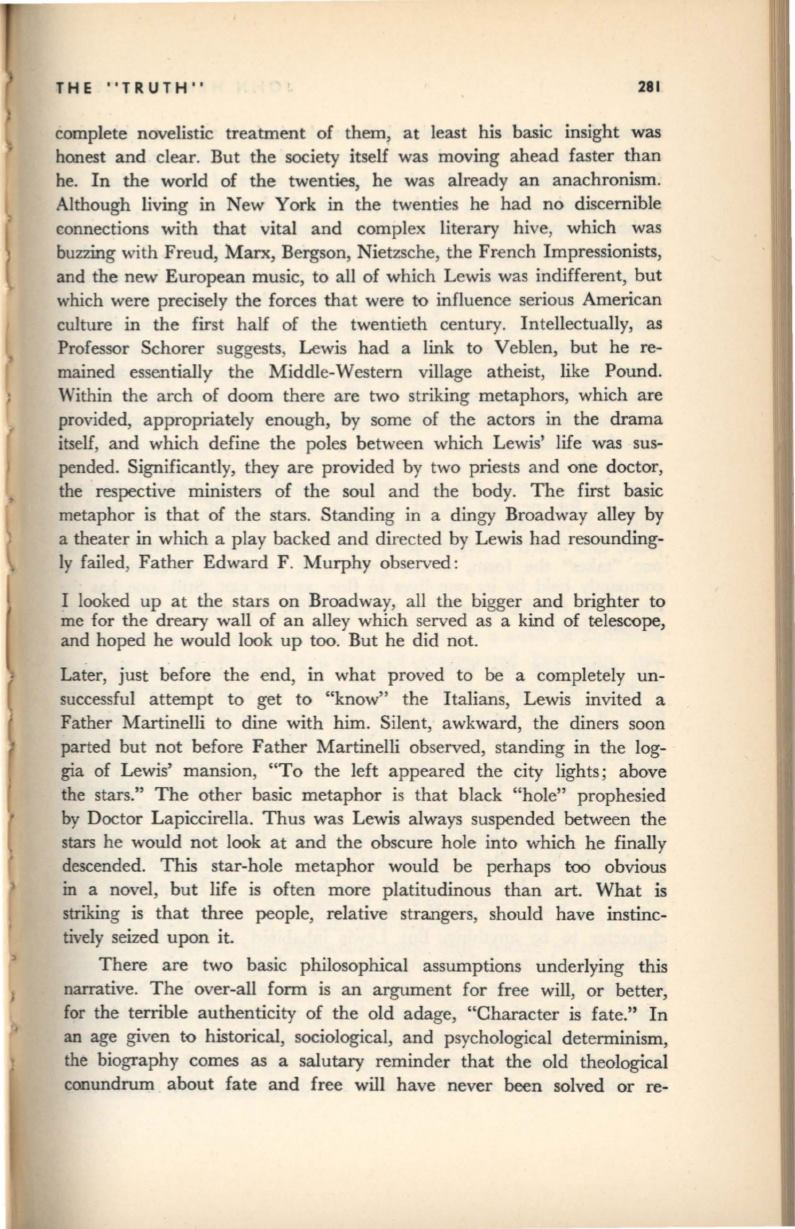
THE "TRUTH"
281
complete novelistic treatment of them, at least his basic insight was
honest and clear. But the society itself was moving ahead faster than
he. In the world of the twenties, he was already an anachronism.
Although living in New York in the twenties he had no discernible
connections with that vital and complex literary hive, which was
buzzing with Freud, Marx, Bergson, Nietzsche, the French Impressionists,
and the new European music, to all of which Lewis was indifferent, but
which were precisely the forces that were to influence serious American
culture in the first half of the twentieth century. Intellectually, as
Professor Schorer suggests, Lewis had a link to Veblen, but he re–
mained essentially the Middle-Western village atheist, like Pound.
Within the arch of doom there are two striking metaphors, which are
provided, appropriately enough, by some of the actors in the drama
itself, and which define the poles between which Lewis' life was sus–
pended. Significantly, they are provided by two priests and one doctor,
the respective ministers of the soul and the body. The first basic
metaphor is that of the stars. Standing in a dingy Broadway alley by
a theater in which a play backed and directed by Lewis had resounding–
ly
failed, Father Edward F. Murphy observed :
I looked up at the stars on Broadway, all the bigger and brighter to
me for the dreary wall of an alley which served as a kind of telescope,
and hoped he would look up too. But he did not.
Later, just before the end, in what proved to be a completely un–
successful attempt to get to "know" the Italians, Lewis invited a
Father Martinelli to dine with him. Silent, awkward, the diners soon
parted but not before Father Martinelli observed, standing in the log–
gia of Lewis' mansion, "To the left appeared the city lights; above
the stars." The other basic metaphor is that black "hole" prophesied
by Doctor Lapiccirella. Thus was Lewis always suspended between the
stars he would not look at and the obscure hole into which he finally
descended. This star-hole metaphor would be perhaps too obvious
in
a novel, but life is often more platitudinous than art. What is
striking is that three people, relative strangers, should have instinc–
tively seized upon it.
There are two basic philosophical assumptions underlying this
narrative. The over-all form is an argument for free will, or better,
for the terrible authenticity of the old adage, "Character is fate." In
an age given to historical, sociological, and psychological determinism,
the biography comes as a salutary reminder that the old theological
conundrum about fate and free will have never been solved or re-


